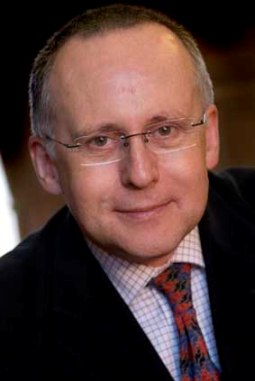
Ted Nield confesses to a personal weakness for holes and bridges
Geoscientist 21.11 December 2011/January2012
Ask Mme. Nield, and she will tell you – I will travel miles out of my way to admire a good bridge or a hole in the ground. I suspect that the long-suffering spouse of any geologist, even a ‘recovering’ one, will tell a similar tale. From the Roman aqueduct at Segovia to the Rössing uranium mine in Namibia (
Geoscientist 12.12, December 2002), eye-rolling accounts of holiday diversions past will come pouring out over the Christmas apéritifs.
As this double-issue of
Geoscientist bridges the old year and the new, it is a particular pleasure therefore to welcome two pieces – our feature on the
engineering geology of the third Firth of Forth crossing, currently under construction, and a story about a
new ‘citizen science’ initiative from BGS to enable geological information from temporary excavations to be recorded for posterity.
Since the transport revolution - brought about by hydrocarbons, the internal combustion engine and symbolized by such engineering feats as the Forth road bridge - mass materials transport has progressively banished local quarries, mines and brick pits from our landscape. The local quarry, worked sporadically to satisfy local demand for Earth materials such as lime, dimension stone or gravel, has been replaced by the distant mega-quarry serving national – or even international markets. Meanwhile, old quarries slowly fill and become overgrown - not only inaccessible, but even indistinguishable from the countryside around them.
For these reasons, temporary excavations opened during construction work have assumed ever greater importance to our understanding of local geology – as
John Brown and Tom Berry demonstrate in their article. For even those civil engineering works that one might have expected to lead to permanent exposures are, in today’s world, increasingly not doing so. One expects a deep basement or underground car park to eventually fill the hole dug for it. But these days even road cuttings are covered by netting, or worse, by shotcrete and reinforced concrete abutments. There almost seems to be a conspiracy afoot to blinker us against all evidence of the landscape’s past.
Lacking the sort of legal backing that demands the presence of qualified archaeologists at excavations, geologists have struggled to record the information that temporary holes so fleetingly reveal. This new IT venture, harnessing amateur and professional together through new technology, will help to bridge that lamentable gap in our legislative framework.
TED NIELD
Editor